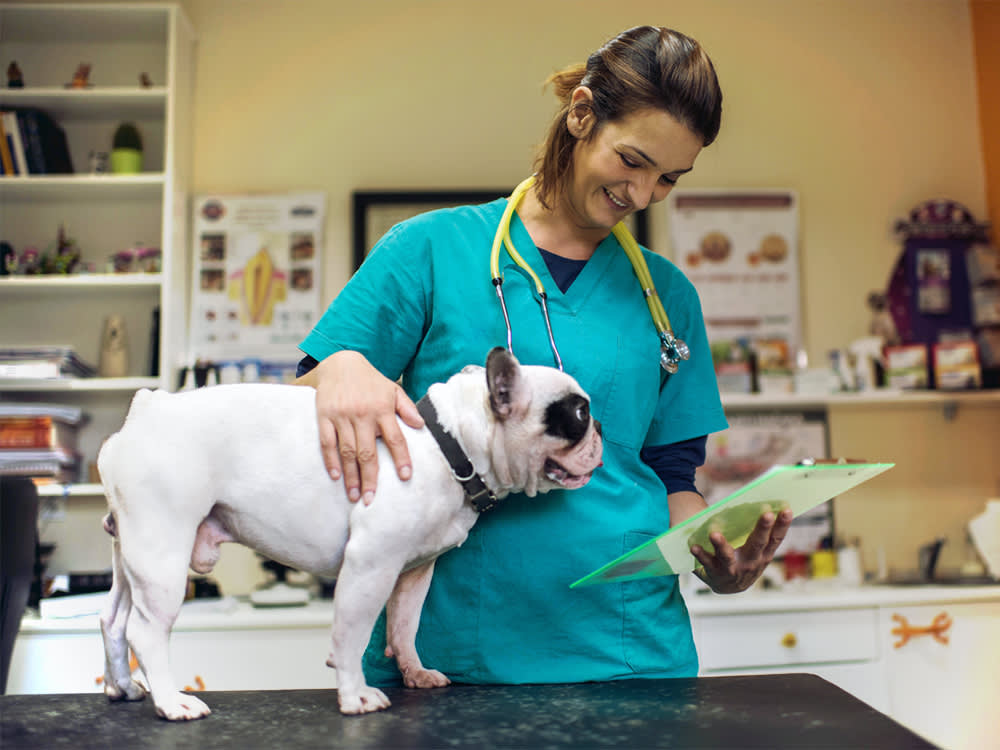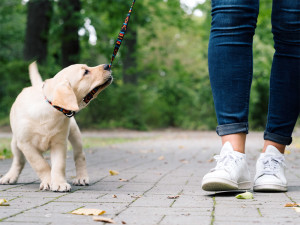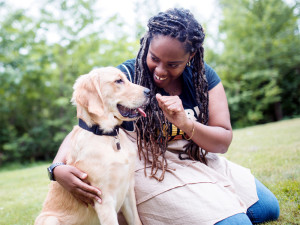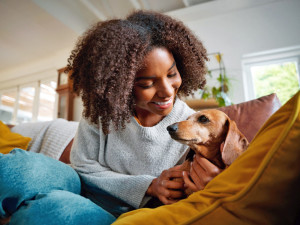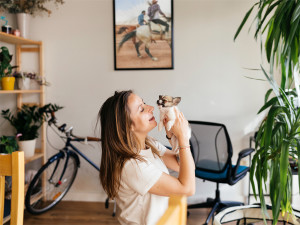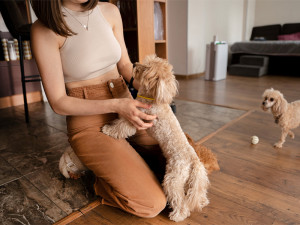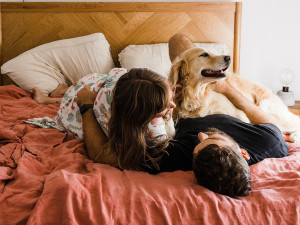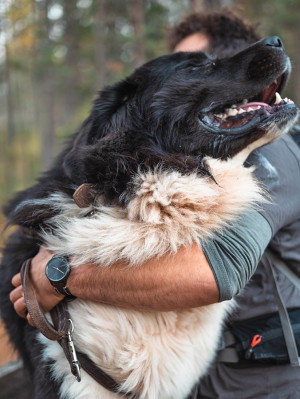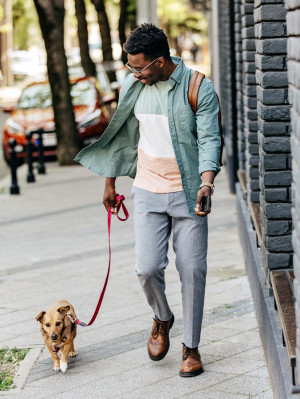10 Tips to Give Your Dog a Blissful Vet Visit
Reduce the stress of vet visits – for you and your pup
Not many dogs are fans of going to the vet. Some may display unruly behaviour, signs of stress (shaking and salivating) or even aggression. Unfortunately, you can’t simply explain to them that even though it might not always seem like it, the vet has their best interests at heart. How then – for the sake of your dog, yourself and your vet – can you help your pup to love (OK, calmly tolerate) a visit to the vet? Learn how to keep your dog calm and less stressed at the vet with these steps for vet-visit bliss... or something close to it.
1. Choose the right vet
This is obvious but important. Of course, you want your vet to be up on the latest in the field of veterinary medicine, but equally important is someone who is willing to take time with a skittish, anxious or even just highly exuberant dog. The entire clinic staff should be sensitive to your dog’s needs. Ask the veterinary practice directly about their willingness to work with you if your dog is struggling to cope. Shop around; if a vet isn’t interested in accommodating you, find one who is.
Good practices include using treats to help dogs feel happier and taking a little extra time to encourage (rather than force) dogs to do what they need to do. Lessons from Sophia Yin’s Low Stress Handling, Restraint and Behaviour Modification of Dogs & Catsopens in new tab have made a huge difference for many dogs, so ask if your vet is accustomed to incorporating them into their practice on a daily basis. Among the many issues Yin covers: getting dogs in and out of kennels and putting them on a lead, reading a dog’s visual signals to recognise stress and fear, various methods of restraint required for various procedures, how best to pick dogs up, detailed principles of classical and operant conditioning to modify behaviour and many other ways to minimise the emotional challenges dogs face at the vet.
2. Communicate with your vet
Be clear with your vet about what scares your dog and what steps are possible to make your dog have a better experience at the office. Share any cues your dog knows that can be helpful, such as sit, down and stay, as well as the other cues mentioned below.
Videos are a great way to share information about cues and problematic issues, so consider asking your vet if you can send in videos to explain your dog to them. If they agree, be thoughtful of your vet and veterinary nurse’s time, and keep the videos brief. If the staff is not willing to look at these videos, consider that perhaps you haven’t found the right vet for you and your dog.
3. Make vet days ‘fun days’
Follow every vet visit with a favourite activity, such as a swim, a visit to the park or a walk in the woods. Knowing that a good time will follow the vet visit can help your dog feel better about being there.
4. Train your dog to relax
Teach your dog to relax in response to your touch by practicing dog massage at home. Then, give them a soothing massage during a vet visit, especially while in the waiting area. To increase its effect, practise it in a familiar setting rather than trying it for the first time at the vet’s office.
5. Train your dog in tricks
To alleviate the stress your dog may feel about being physically manipulated at the vet, train your dog with useful tricks that translate to the exam process – for example, teach them to step up on to a small platform when asked. This is a trick that works well for the vet’s scale.
Others include ‘belly up’ for abdominal exams, ‘shake’ to present a paw for blood tests and ‘down/stay’ for vaccinations, exams and anything else that requires them to remain still. Besides making visits to the vet less stressful, training your dog to perform these behaviours on cue also shortens the visit, which, in turn, makes it less problematic for everyone (and may even leave more time for you to discuss your concerns with the vet).
6. Use counter-conditioning
Counter-conditioning can be used to help prepare your dog for potentially scary things. This means teaching your dog to associate something that will happen during a vet visit with feeling good. Examples include teaching them that when someone examines their ears or their mouth, they will get a treat. With enough practice doing this in the right way (they’re not frightened and receive a treat), you can make these aspects of an exam no big deal for your dog.
7. Get acquainted first
Make your first visit to the vet an opportunity to get acquainted – to sniff around the waiting room, meet the vet and the staff and have a pleasant experience free of pesky exams or needles. If your dog is comfortable getting on the scale, a weigh-in is fine, but if not, skip it. Have everyone your dog meets be a source of the highest-quality treats you can provide: burgers, chicken, real steak. If your dog is a fan of balls, chew toys or squeaky toys, have the vet and the nurse each give your dog one while in the examination room.
You want your dog to think that this is a place where the most wonderful things happen. I call these appointments ‘meet-and-greets’ and I advise them for dogs of any age. Simply call the vet and say that you’d like to make (and pay for) an appointment during which your dog is introduced to the facility and the staff. If they’re unwilling, consider looking for another vet.
8. Give lots of tasty treats
Have everyone at the clinic give your dog lots of top-quality treats at every visit. This is vet 101 advice, but it’s popular for a reason: it works. If a dog learns that they get the most delicious treats in the world while at the vet, they’re more likely to be cooperative about going there. To be successful, two important aspects of this strategy must be observed. First, use extra-special treats, not the ordinary kind; dry biscuits are just not going to have the same emotional impact. Which would you find more motivating: a chocolate chip cookie or a cracker? Second, unless it’s inappropriate for your dog’s health condition, be generous: multiple treats make more of an impression.
9. Plan your clinic entrances and exits
Many dogs’ objections to the vet are really about the waiting area. If this applies to your dog, there are ways to get around the situation. Ask if there’s a back entrance that you and your dog can use. Also, try using your car as an alternate waiting room and ask if someone will let you know when it’s time for the exam. At some clinics, a staff member will come out to your car or give you a call to let you know it’s your turn.
10. Finally, maintain a calm frame of mind yourself
Your emotions are contagious: the more cheerful and relaxed you are, the more you can help your dog. So, use whatever works for you – chocolate, relaxing music, deep-breathing exercises – but try not to stress!
A studyopens in new tab examined the effects of contact with a pet parent during veterinary exams on the stress levels of the dog. The basic conclusion of the study was that it is beneficial to dogs for their people to interact with them with physical contact and verbal communication. Dogs were less stressed by several measures when their parents interacted with them compared with just having them present in the room.
Regular vet visits are important to your dog’s health and wellbeing, but getting your pup there is only half the battle. Having them be happy and cooperative is the real victory, which is why I advise making this a fundamental part of every dog’s training and education.
